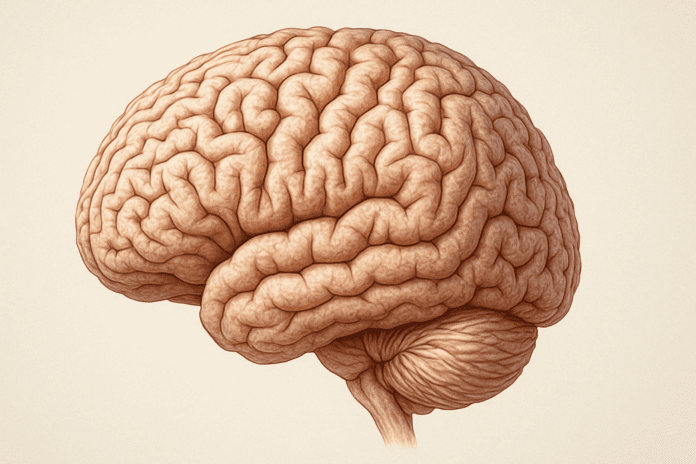The Cerebral Cortex: An Introduction to the Brain’s Outer Mastermind
The human brain is one of the most intricate and powerful organs in the body, and the cerebral cortex stands as its crowning glory. This thin, wrinkled layer on the surface of the cerebral hemispheres plays an outsized role in everything from memory and reasoning to language and consciousness itself. When discussing the thin layer of surface on cerebral hemispheres, we are directly referring to the cerebral cortex—a structure no thicker than a few millimeters yet composed of billions of neurons. Despite its delicate appearance, this sheet of gray matter is responsible for the incredible complexity that defines human cognition and behavior. Scientists have long recognized the cerebral cortex as central to higher-order functions, but our understanding continues to evolve with advancements in neuroimaging and computational modeling.
The importance of the cerebral cortex structures cannot be overstated. Each region of the cortex contributes uniquely to our mental and sensory life. Whether it’s appreciating a piece of art, solving a complex equation, or even feeling empathy, the cerebral cortex is in action. Furthermore, understanding the location and architecture of this structure is key to diagnosing and treating various neurological conditions. Many disorders, from epilepsy to Alzheimer’s disease, involve cortical disruption, making the study of the cortex critical for both research and clinical practice. This article aims to provide a detailed, medically accurate, and engaging exploration of the cerebral cortex and functions associated with it, suitable for a well-educated audience.
You may also like: Boost Brain Power Naturally: Evidence-Based Cognitive Training Activities and Memory Exercises That Support Long-Term Mental Health
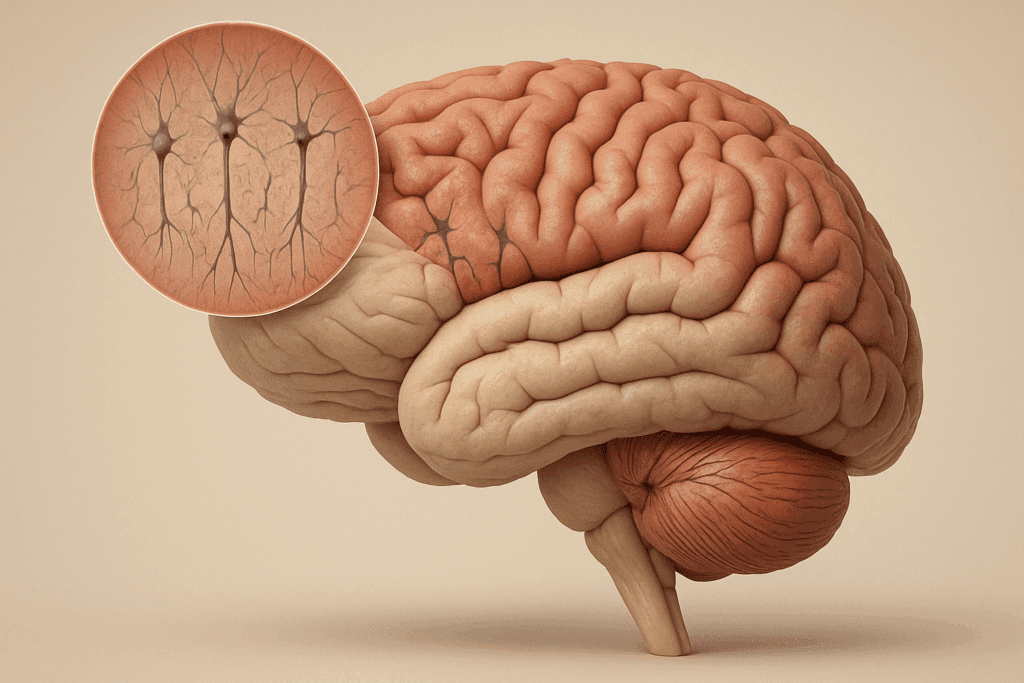
Defining the Cortex of the Brain: A Primer for Clarity and Context
To define the cortex of the brain accurately, we must begin with its anatomical and functional distinction. The cortex is the outermost layer of the brain’s cerebrum and consists primarily of gray matter. This area is made up of neuronal cell bodies, dendrites, and unmyelinated axons, which together facilitate intricate information processing. Unlike the white matter beneath it, which is involved more with transmitting signals, the cortex is where those signals are interpreted and transformed into thought, action, and perception. Thus, when someone asks for the cortex of the brain’s definition, it is best described as the brain’s processing hub for higher-level tasks.
A common query among students and patients alike is, “Where is the cerebral cortex located in the brain?” The answer is both simple and profound: it covers the entire surface of the cerebral hemispheres. This makes it a pervasive and highly influential structure. The cortex is not a monolithic entity, though; it is organized into lobes and specialized areas, each responsible for specific cognitive and sensory functions. These distinctions are not merely academic but have clinical relevance, especially when localized brain injuries affect certain cortical functions.
The cortex region of the brain is further subdivided into areas known for their unique contributions. These include the primary motor cortex, which initiates voluntary movement; the sensory cortices that interpret input from the environment; and the association areas responsible for integrating and making sense of complex stimuli. Understanding the interplay of these regions not only sheds light on normal brain function but also illuminates the pathways disrupted in neurological disorders.
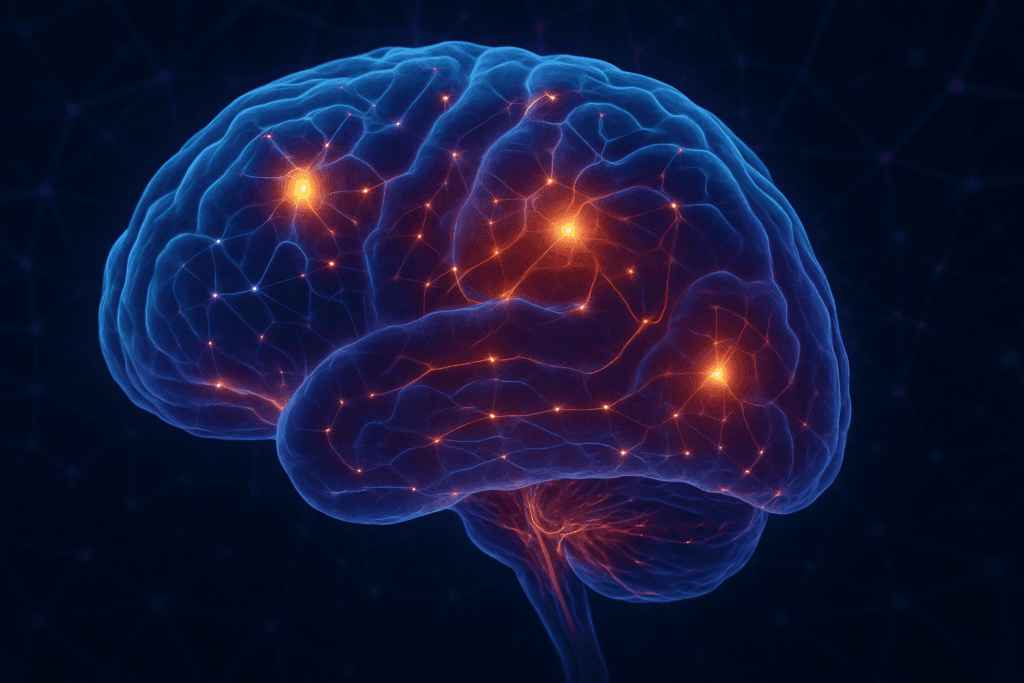
What the Cerebral Cortex Does in the Brain: Core Functions and Sophisticated Roles
When addressing the question of what the cerebral cortex does in the brain, one must look at its role as the seat of consciousness, decision-making, and self-awareness. The cerebral cortex enables humans to plan, reason, speak, and engage in abstract thinking. It is also involved in processing sensory information and regulating motor activity. Its vast surface area, achieved through folds known as gyri and sulci, allows for a greater number of neurons within a limited space—a design feature that supports its advanced functionality.
Emotionally resonant experiences, such as recognizing a loved one or recalling a cherished memory, involve extensive cortical activation. Cognitive flexibility, an ability tied to problem-solving and adaptability, also relies on cortical mechanisms. This highlights the cortex’s dynamic nature; it is not static but constantly reshapes itself based on experience. Neuroplasticity, the brain’s ability to rewire in response to learning or injury, is particularly robust in the cortical part of brain systems.
In addition, the cerebral cortex and the functions it supports are intimately connected with language, visual perception, and executive functioning. Damage to Broca’s or Wernicke’s areas, for instance, which reside in the frontal and temporal lobes, respectively, can significantly impair language comprehension or production. Such clinical observations further underscore what cerebral cortex control entails—virtually every aspect of our sophisticated mental life.
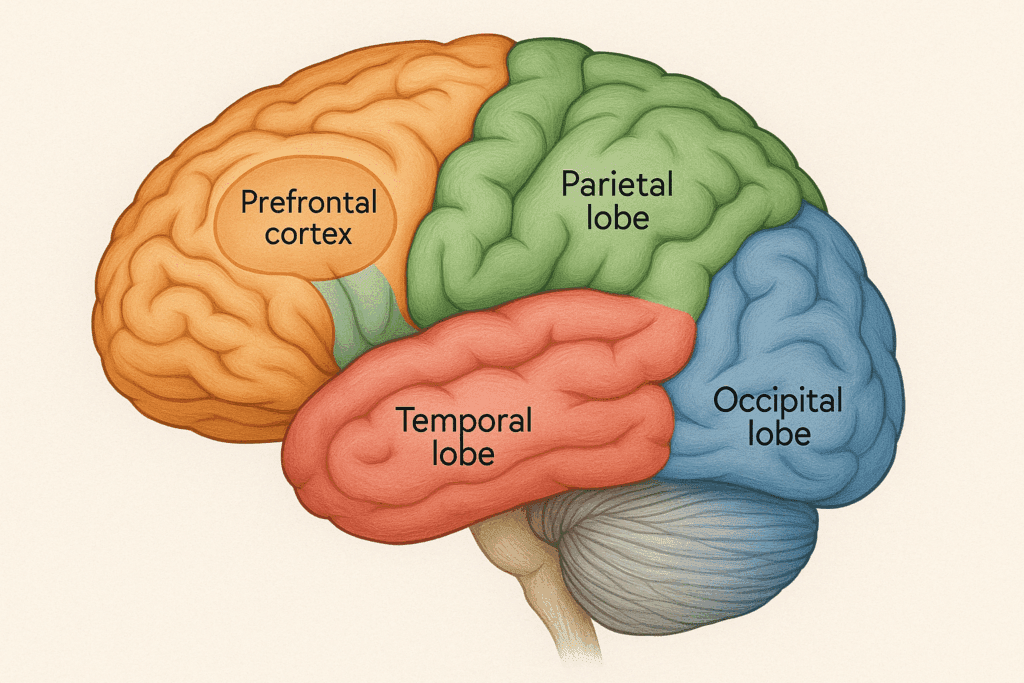
Parts of the Cerebral Cortex: Anatomical Divisions with Distinctive Functions
An essential aspect of understanding the cerebral cortex lies in dissecting the parts of the cerebral cortex and how each region contributes to overall brain function. The cortex is divided into four primary lobes: the frontal, parietal, temporal, and occipital. Each lobe houses specialized cortical regions that interact with one another to perform complex tasks.
The frontal lobe is located at the front of the brain and is primarily involved in planning, problem-solving, decision-making, and voluntary motor activity. It includes the prefrontal cortex, known for its role in personality and complex cognitive behavior, and the primary motor cortex, which governs voluntary movement. The parietal lobe, situated behind the frontal lobe, is crucial for processing sensory input related to touch, temperature, and pain. It also helps integrate sensory information to form spatial awareness.
The temporal lobe, found on the sides of the brain, is heavily involved in auditory processing and memory. It contains the hippocampus, a structure vital for the formation of new memories, as well as the aforementioned Wernicke’s area. Finally, the occipital lobe, located at the back of the brain, is the primary center for visual processing. These anatomical divisions help explain how the cortex region of the brain supports such a wide array of mental capabilities.
These subdivisions do not work in isolation. Neural pathways allow for constant communication among the lobes, creating a synchronized network that supports everything from reading comprehension to emotional regulation. This interconnectivity is what gives the cerebral cortex its remarkable efficiency and adaptability.

Where Is the Cerebral Cortex Function Localized? Bridging Location with Task
For those wondering where cerebral cortex activity is localized during specific tasks, it is essential to understand that different functions correspond to different cortical areas, but these boundaries are not always rigid. Functional magnetic resonance imaging (fMRI) and positron emission tomography (PET) scans have shown that the brain operates through distributed networks, even for seemingly simple actions.
Take vision, for example. While the occipital lobe is considered the primary visual processing center, the temporal and parietal lobes are also engaged in recognizing patterns and spatial orientation. Similarly, movement begins in the primary motor cortex but is coordinated with feedback from the parietal lobe and fine-tuned by the cerebellum. This means that understanding the purpose of the cerebral cortex function involves appreciating a complex web of interrelated processes.
One cannot overlook the plasticity of cortical localization either. In individuals who experience brain damage, other areas of the cortex can sometimes adapt to take over lost functions. This phenomenon has significant implications for rehabilitation and therapy. It also reinforces the importance of understanding the cortical part of brain architecture, especially in planning surgical interventions or targeted therapies for neurological conditions.
In addition, researchers now know that even so-called “silent areas” of the cortex, once thought to have no function, may become active under specific conditions. This revelation adds another layer of complexity to the task of mapping where is the cerebral cortex is located in the brain in terms of its operational domains.

The Cortex of the Brain Definition in Clinical and Educational Contexts
When clinicians and educators define the cortex of the brain, they do so with different emphases but with the same anatomical reference. In clinical neurology, the cortex is considered a key region for diagnosing a range of disorders, from stroke to neurodegenerative disease. Lesions or atrophy in specific cortical areas can result in predictable cognitive and physical impairments, making cortical mapping an essential diagnostic tool.
In educational settings, the cortex is introduced as the control center of the brain’s operations. Students learn about its role in memory formation, emotional regulation, and sensory processing. They also explore how the cortex interacts with subcortical structures like the thalamus and amygdala, which further expands our understanding of what the cerebral cortex does in the brain.
The definition of the cortex of the brain must also include its embryological origins. It develops from the telencephalon, one of the primary brain vesicles during early fetal development. This fact is not just academic; it has implications for understanding congenital brain abnormalities and developmental disorders such as autism and ADHD. Thus, the definition of the cerebral cortex is both broad and deep, touching on anatomy, physiology, pathology, and psychology in equal measure.
Moreover, public health messaging and cognitive training programs increasingly rely on an accurate understanding of this structure. Whether teaching mindfulness, promoting brain health in aging populations, or developing AI models of neural processing, the cortex remains at the center of multidisciplinary interest.
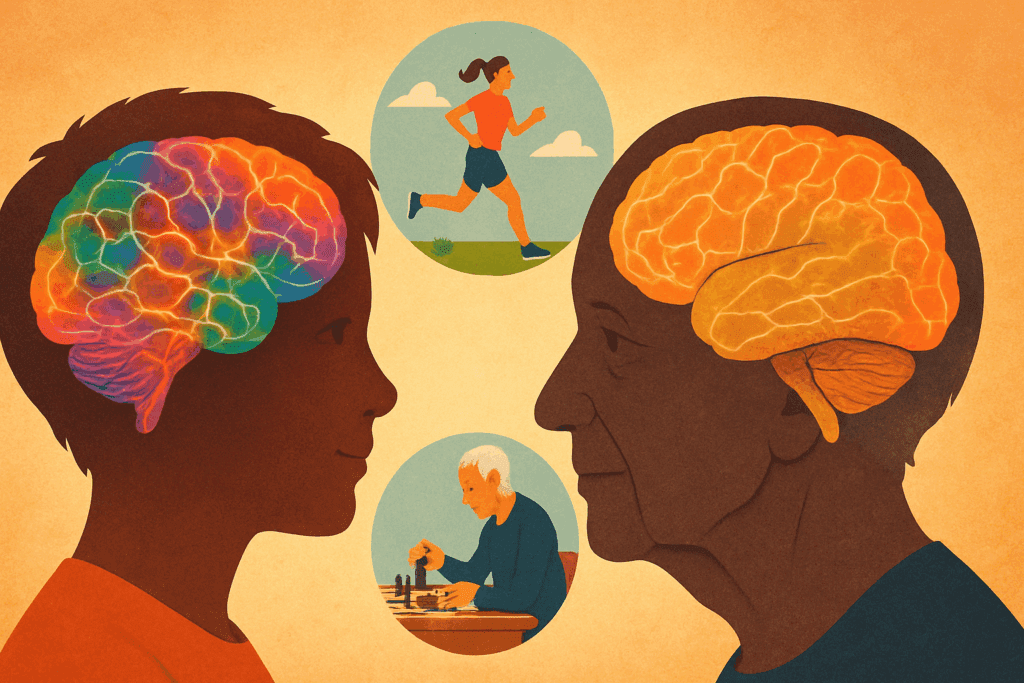
The Cortical Part of Brain Health: Lifespan Considerations and Neuroprotection
The cortical part of brain health is vital across all stages of life. From early childhood development, when the cortex is rapidly forming connections, to older adulthood, when maintaining cortical integrity becomes essential for cognitive longevity, this structure requires continuous support. Early life experiences, including enriched environments and social interactions, can significantly influence cortical development. These findings emphasize the importance of early interventions in education and mental health.
During adulthood, lifestyle factors like physical activity, diet, sleep, and mental stimulation play significant roles in preserving cortical function. Omega-3 fatty acids, antioxidants, and regular aerobic exercise have been shown to support neurogenesis and cortical plasticity. Additionally, cognitive exercises that challenge memory, attention, and reasoning skills can help delay age-related cortical decline.
In older adults, cortical thinning is a natural part of the aging process but is exacerbated in conditions like Alzheimer’s and other forms of dementia. Neuroimaging studies reveal that areas such as the prefrontal cortex and hippocampus are particularly vulnerable. However, interventions like social engagement, continuous learning, and even certain medications may help mitigate some of this decline. This makes it clear that understanding the cortex region of the brain has practical implications for designing personalized and population-wide strategies for brain health.
The role of inflammation, oxidative stress, and vascular health in cortical degeneration is also a growing area of research. These systemic factors influence the brain’s microenvironment and can impair the cortex’s ability to function efficiently. As such, a holistic approach to health that includes cardiovascular care and anti-inflammatory practices is increasingly recognized as essential for preserving the cerebral cortex.
Frequently Asked Questions About the Cerebral Cortex
1. How does the cerebral cortex adapt to long-term learning and habit formation?
While the article touches on general functions, it doesn’t delve into how the cerebral cortex facilitates sustained learning through experience. Long-term learning leads to structural and functional changes in the cortical part of brain regions, especially within the prefrontal and motor cortices. This adaptation, known as neuroplasticity, allows synapses to strengthen with repeated use, enabling habit formation and skill retention. Unlike short-term memory storage, long-term procedural memory can alter the cortex region of the brain, embedding new behavior patterns. So, when exploring what the cerebral cortex does in the brain, it’s essential to consider its capacity for physical remodeling as a response to mental effort and behavioral repetition.
2. What is the relationship between the cerebral cortex and emotional intelligence?
Emotional intelligence depends on nuanced processing within the cortex region of the brain, particularly in areas that integrate emotion and cognition. The medial prefrontal cortex plays a vital role in self-awareness, empathy, and emotional regulation, linking feelings with social reasoning. When assessing the purpose of cerebral cortex activity, this domain reveals the cortex’s influence beyond logic and into social behavior. Understanding what the cerebral cortex controls means recognizing its role in processing not only factual data but also interpreting facial expressions, tone, and complex interpersonal dynamics. These functions illustrate how emotional and cognitive faculties are inseparable within the cortical part of brain networks.
3. In what way is the cerebral cortex affected by chronic stress?
Chronic stress has a measurable impact on the cortex of the brain, particularly by shrinking dendritic branches in the prefrontal cortex and hippocampus. These changes can impair decision-making, attention, and memory—functions directly tied to cerebral cortex and functions associated with executive control. Moreover, stress-induced cortisol dysregulation alters neurotransmitter balance, which disrupts the cortex region of the brain’s ability to modulate emotional responses. Studies on what the cerebral cortex does in the brain under stress conditions have shown reduced cognitive flexibility and poor emotional resilience. Therefore, interventions that target stress reduction may directly protect and preserve this sensitive and highly functional brain layer.
4. How does the cerebral cortex differ between humans and other animals?
Though most mammals have a cortex, the complexity of the human cerebral cortex is unparalleled. The increased surface area due to extensive folding (gyri and sulci) allows for more neurons and greater processing power. When considering the parts of the cerebral cortex, humans display expanded regions dedicated to language, abstract reasoning, and moral judgment. Understanding the purpose of cerebral cortex expansion in our species reveals why humans excel in creativity, social complexity, and symbolic thought. So when you define the cortex of the brain evolutionarily, it becomes clear that our cognitive leap is largely due to this structure’s elaboration.
5. Can brain injuries selectively impair different cortical functions?
Absolutely. Depending on the location of the trauma, specific parts of the cerebral cortex can be compromised, resulting in distinct cognitive or motor deficits. Damage to the occipital lobe might cause visual hallucinations, while injury to the left temporal lobe could impact language comprehension. The cortex region of the brain is organized topographically, meaning function often correlates with physical position. This is why understanding where the cerebral cortex is located in the brain becomes critical in neurology and neurosurgery. Each area’s role in what the cerebral cortex does in the brain helps clinicians predict and treat resulting impairments.
6. How does technology help us study the cerebral cortex today?
Modern imaging technologies like fMRI, MEG, and high-density EEG allow researchers to examine real-time cortical activity with remarkable precision. These methods reveal not just where the cerebral function is located but how the cortical part of brain regions communicate dynamically. Such tools help refine the cortex of the brain’s definition from a static anatomy reference to a map of interactive networks. Moreover, brain-computer interfaces (BCIs) now harness cortical signals to aid those with paralysis, translating intent into digital commands. This evolution in research deepens our understanding of the cerebral cortex and functions not observable through traditional methods.
7. Are there any lifestyle changes that can protect the cerebral cortex?
Yes, a brain-healthy lifestyle can significantly preserve the structural integrity and efficiency of the cerebral cortex. Regular aerobic exercise increases blood flow to the cortical part of brain areas, promoting neurogenesis and synaptic health. Diets rich in omega-3s, polyphenols, and antioxidants combat inflammation and oxidative stress, key threats to the cortex region of the brain. Sleep, especially deep sleep, supports memory consolidation and cortical detoxification. When exploring what the cerebral cortex controls over the lifespan, it becomes evident that lifestyle choices play a pivotal role in long-term brain vitality.
8. What role does the cerebral cortex play in multisensory integration?
Multisensory integration occurs when the brain combines inputs from different senses to form a cohesive understanding of the environment. This process heavily involves the association areas within the parts of the cerebral cortex, particularly the parietal and temporal lobes. These areas synthesize auditory, visual, tactile, and proprioceptive signals to enhance perception and decision-making. When trying to define the cortex of the brain beyond isolated sensory processing, its integrative capabilities come to the forefront. It’s this synthesis that helps us navigate complex, real-world situations effectively and efficiently.
9. Why is the cerebral cortex still a major focus of neuroscience research?
Despite decades of study, many mysteries remain about what the cerebral cortex does in the brain, particularly how consciousness arises from cortical activity. Research continues to explore how different parts of the cerebral cortex interact and contribute to the formation of self-awareness, imagination, and even dreams. Understanding where the cerebral cortex is located in the brain isn’t just about anatomy—it’s also about functional boundaries and cross-regional cooperation. As new imaging techniques and machine learning models emerge, our capacity to decode the cortex region of the brain increases exponentially. This ongoing inquiry is central to understanding human nature itself.
10. How early in development does the cerebral cortex begin to function?
The cortical part of brain development begins early in gestation, but true functional activity starts to appear in the third trimester of pregnancy. Initial signals in the cortex of the brain are basic and primarily sensory, responding to tactile and auditory stimuli. Postnatally, the cerebral cortex and functions rapidly evolve as infants engage with their environment, forming foundational neural pathways for language, motor control, and social interaction. Knowing what the thin layer of surface on cerebral hemispheres means recognizing how early and crucial its involvement is in human development. Longitudinal studies confirm that early environmental enrichment can significantly enhance cortical maturation and long-term cognitive potential.
Conclusion: Why Understanding the Cerebral Cortex Matters for Mental Clarity and Long-Term Brain Health
The cerebral cortex is much more than a thin layer of surface on cerebral hemispheres; it is the cornerstone of what makes us human. From shaping our identities and decisions to orchestrating complex thoughts and movements, the cerebral cortex and the functions it performs define the essence of our mental and emotional lives. Its intricate architecture and dynamic capabilities are crucial not only for everyday tasks but also for our long-term mental health and cognitive resilience.
Understanding what the cerebral cortex does in the brain allows us to appreciate the depth of human intelligence and the fragility of neurological health. Whether you are curious about where the cerebral cortex is located in the brain or interested in the evolving science behind what the cerebral cortex controls, the answers are both fascinating and vital. This knowledge has implications for everything from personal wellness to cutting-edge neuroscience and clinical practice.
By gaining a deeper appreciation for the parts of the cerebral cortex and how they contribute to our cognitive toolkit, we become better equipped to protect and enhance our brain health throughout our lifespan. The definition of the cortex of the brain is not merely academic; it is a gateway to understanding the self, managing disease, and advancing human potential. As science continues to uncover new layers of meaning in the cortical part of brain function, one truth remains clear: this structure is not just central to the brain but to the very nature of consciousness and life itself.
Was this article helpful? Don’t let it stop with you. Share it right now with someone who needs to see it—whether it’s a friend, a colleague, or your whole network. And if staying ahead on this topic matters to you, subscribe to this publication for the most up-to-date information. You’ll get the latest insights delivered straight to you—no searching, no missing out.
Further Reading:
Cerebral cortex Structure Lobes of the cerebral cortex
Disclaimer
The information contained in this article is provided for general informational purposes only and is not intended to serve as medical, legal, or professional advice. While Health11News strives to present accurate, up-to-date, and reliable content, no warranty or guarantee, expressed or implied, is made regarding the completeness, accuracy, or adequacy of the information provided. Readers are strongly advised to seek the guidance of a qualified healthcare provider or other relevant professionals before acting on any information contained in this article. Health11News, its authors, editors, and contributors expressly disclaim any liability for any damages, losses, or consequences arising directly or indirectly from the use, interpretation, or reliance on any information presented herein. The views and opinions expressed in this article are those of the author(s) and do not necessarily reflect the official policies or positions of Health11News.

